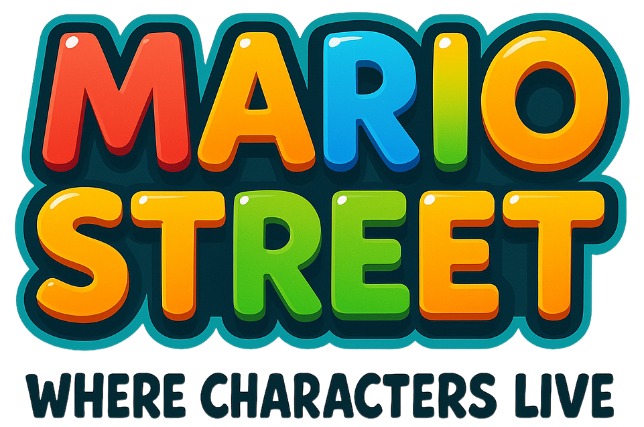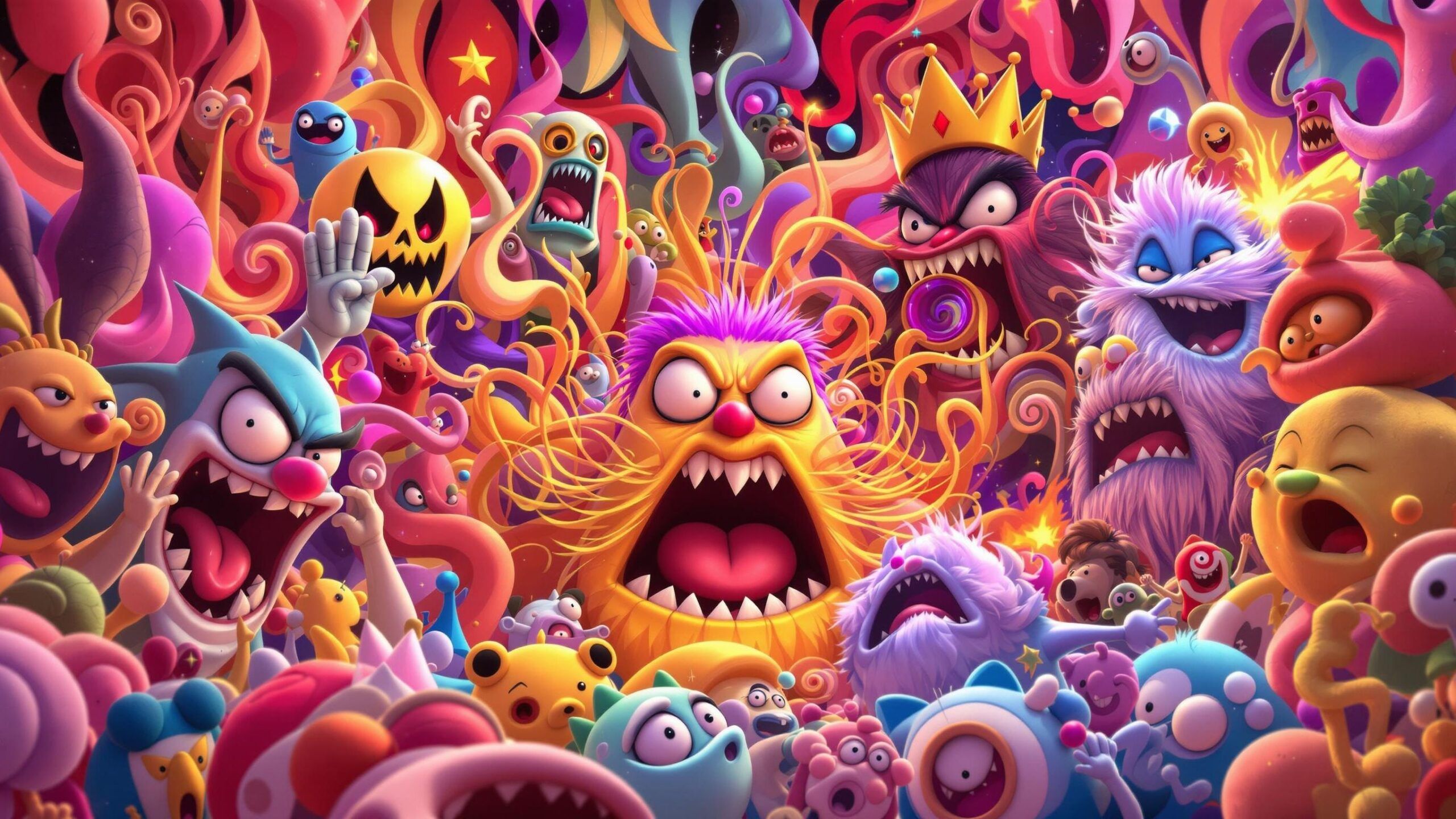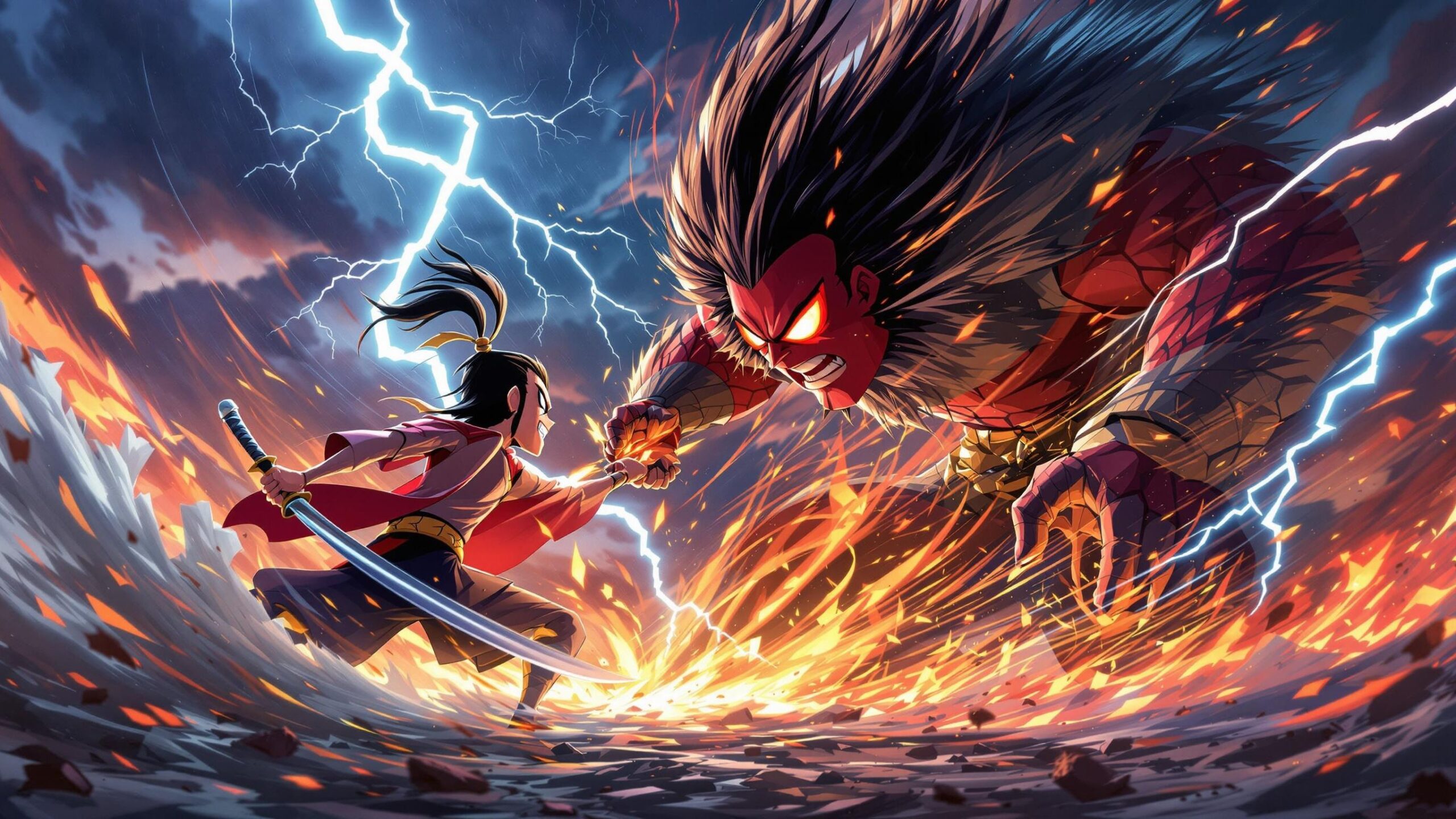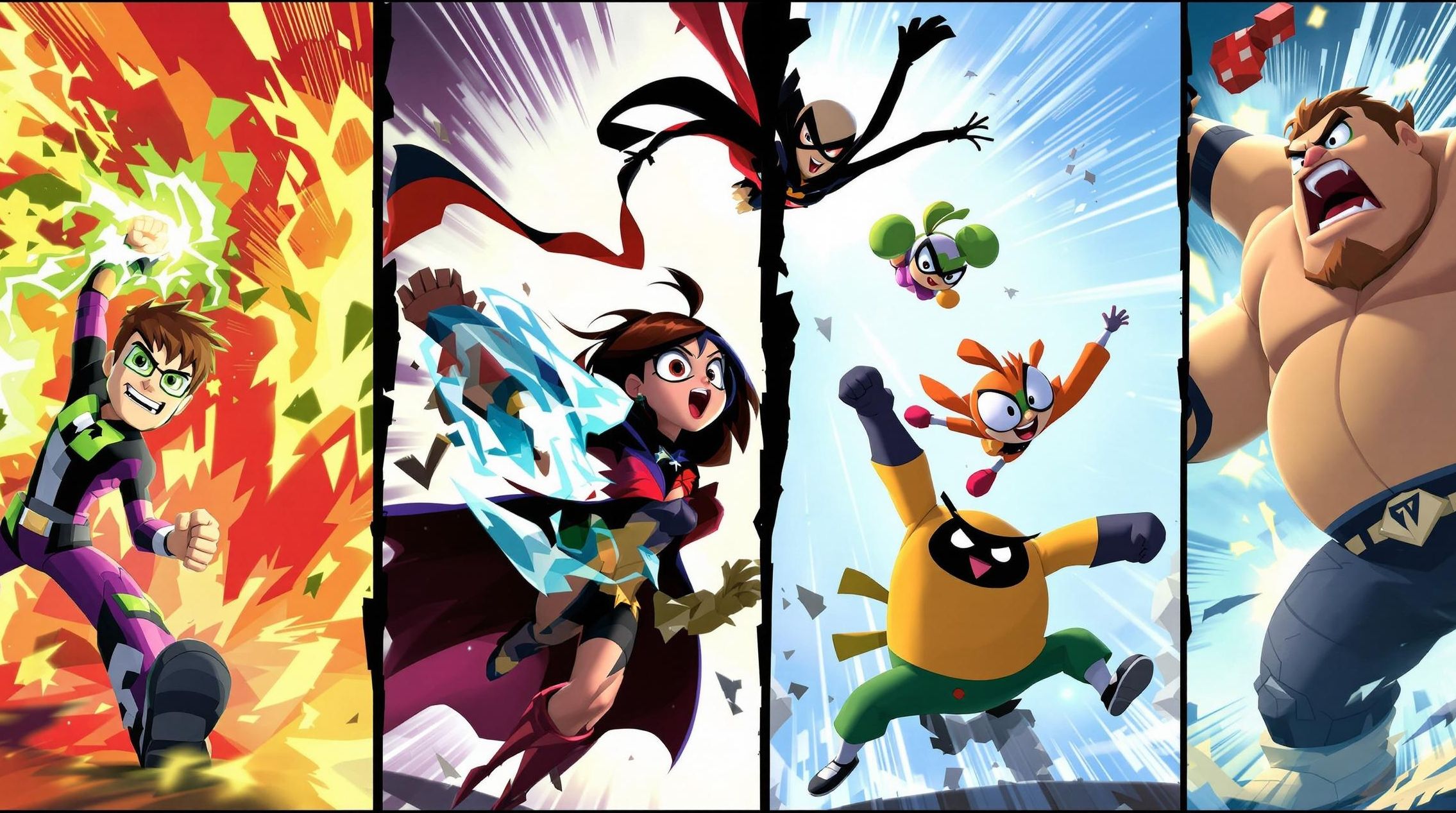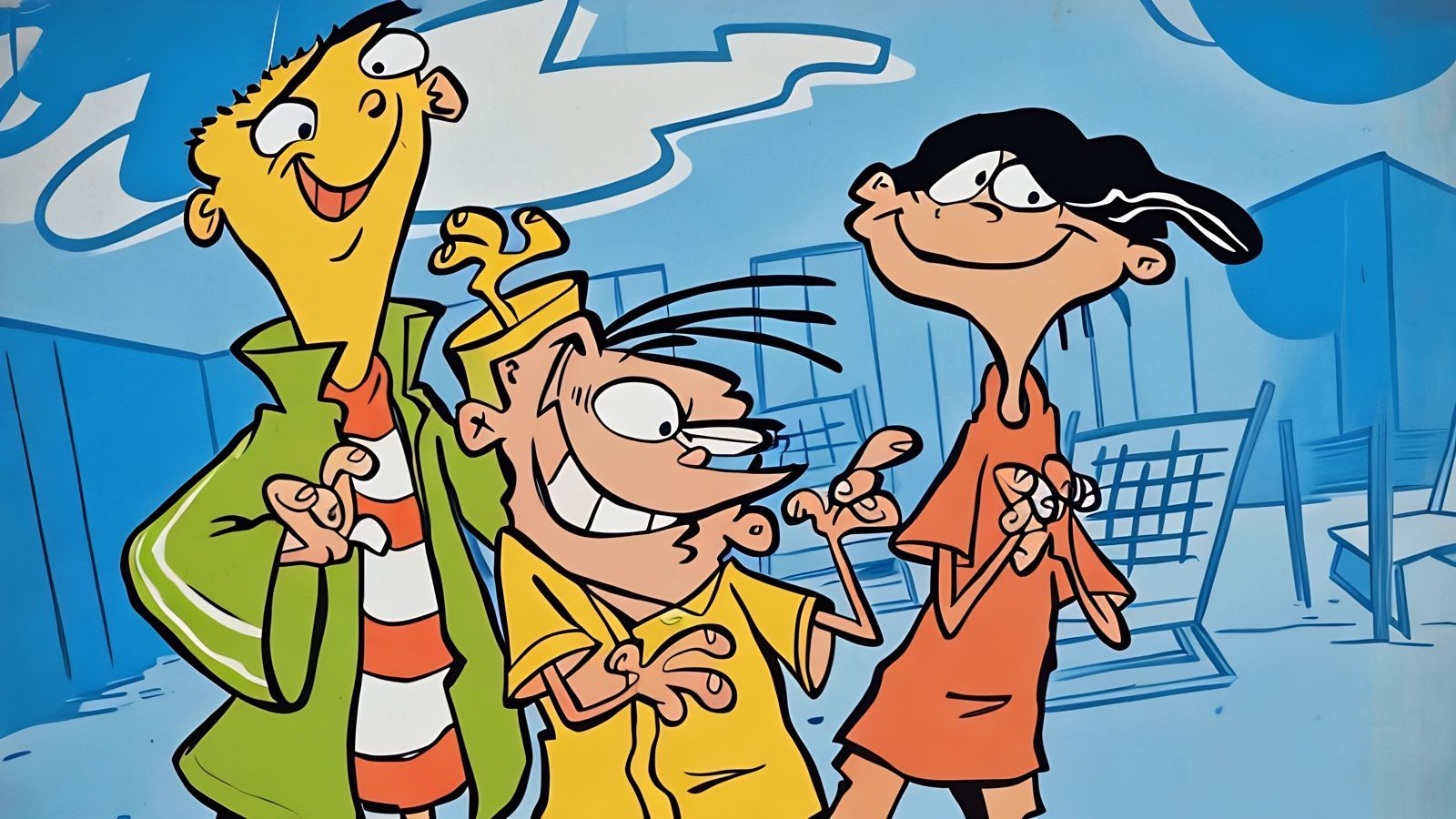In a show as wild and unpredictable as Adventure Time, the villains were never just obstacles—they were reflections of the show’s deepest fears, biggest themes, and weirdest twists. Whether they were ancient monsters, tragic souls, or just chaotic beings who liked to mess stuff up for fun, these antagonists left marks that went deeper than the surface. Some haunted our heroes for seasons, others popped up for a single arc and vanished into legend. But every villain on this list did one thing right—they made an impact. Welcome to the Top 10 Adventure Time Villains Who Made an Impact—a deep dive into the baddies who changed Ooo forever.
#10: Magic Man
Magic Man wasn’t your typical prankster. He didn’t just cause mischief—he wrecked people emotionally, often for no reason at all. With a wavy green cloak, a pointy nose, and a voice that swung from silly to sinister in a heartbeat, Magic Man brought chaos with a dark undercurrent. At first, he seemed like a joke character. Turning birds inside out, body-swapping Finn and Jake, and randomly shouting nonsense like “You have 12 oranges!” gave off total troll energy. But as Adventure Time dug deeper, it became clear—Magic Man wasn’t just annoying. He was deeply broken.
Once a brilliant Martian scientist named Normal Man, he lost his wife Margles and spiraled into madness. The loss shattered his mind and soul, turning him into a cosmic jester of pain. His magic, while impressive, was often used not to defeat enemies, but to punish the world around him for existing. Episodes like “Sons of Mars” and “Normal Man” revealed a tragic backstory involving his brother Glob, his exile from Mars, and his eventual path to redemption.
What makes Magic Man such an impactful villain is that he’s not pure evil. He’s grief in human (Martian?) form. He lashes out because he doesn’t know how to be anymore. Even his eventual transformation back into Normal Man doesn’t undo the damage he caused—but it does add a rich layer of humanity to his arc. He’s a reminder that sometimes the most dangerous villains aren’t monsters—they’re just people who’ve forgotten how to live with pain.
#9: Orgalorg
Underneath Gunter’s waddling, squawking surface hid one of the most terrifying cosmic villains in Adventure Time lore—Orgalorg, the Breaker of Worlds. That’s right. The Ice King’s cute, chaotic penguin sidekick was actually an ancient, galactic being banished to Earth for trying to absorb the power of a cosmic comet. Talk about a twist. When Orgalorg finally emerges in “Orgalorg,” it flips the show’s tone from goofy to apocalyptic in seconds. Gunter’s eyes glow green, his body stretches unnaturally, and suddenly he’s communicating with celestial forces way beyond Ooo’s pay grade.
Orgalorg’s true form is a shadowy, many-eyed monstrosity, more akin to Lovecraftian horror than anything else in the Candy Kingdom. The reveal not only adds unexpected depth to Gunter but also expands the show’s mythology. This isn’t just a land of magic and weirdness—it’s a universe full of forgotten gods and ancient dangers, hiding in plain sight. Orgalorg’s attempt to consume the Catalyst Comet puts him on a collision course with Finn, who’s dealing with his own cosmic identity crisis at the time.
What makes Orgalorg impactful is how hidden he was. For most of the series, Gunter was a comic relief character. The idea that he was secretly one of the oldest, most feared villains in the universe recontextualizes everything we thought we knew. It’s one of Adventure Time’s greatest narrative sleights of hand—camouflaging cosmic horror as slapstick. Orgalorg may not have had as much screen time as other villains, but his presence ripples through the series, reshaping how we view identity, power, and even cuteness.
#8: The Lich
The Lich is pure nightmare fuel. No jokes, no redemption arcs—just death, decay, and the cold end of all things. Introduced with terrifying calm in “Mortal Folly,” the Lich immediately stood out as Adventure Time’s darkest villain. His appearance—a skeletal figure wrapped in a decaying green robe, with empty eye sockets and a slow, venomous voice—was unlike anything else in the colorful world of Ooo. He didn’t yell. He didn’t monologue. He whispered his way into our nightmares, promising only one thing: annihilation.
The Lich’s origins are as ancient and disturbing as his presence. He was born from the Mushroom War, a symbol of humanity’s ultimate self-destruction, rising out of the radioactive ashes of the old world. That backstory alone gives him mythic weight—he isn’t just a villain, he’s the embodiment of entropy. Every time he appears, reality itself starts unraveling. He possesses other characters, escapes from magical prisons, and manipulates time, space, and even Finn’s mind.
One of his most horrifying moments comes in “Escape from the Citadel,” when he strips the flesh from his own body to become a pure skeleton, then possesses a giant cosmic baby. You can’t make this stuff up. But what makes the Lich truly impactful is the existential dread he brings. He isn’t a tyrant or a monster with a motive. He’s death incarnate. And in a show about growing up, finding joy, and being weird with your friends, the Lich is the harsh reminder that everything ends eventually.
Even when he’s defeated—sealed away, reprogrammed into Sweet P, or thwarted by cosmic powers—his legacy remains. He changed the tone of the show. He raised the stakes permanently. And he forced Finn and Jake to confront ideas way bigger than themselves. The Lich didn’t just challenge the heroes—he challenged the entire world of Adventure Time, and that’s why he’ll always be one of its most unforgettable threats.
#7: Ricardio
Ricardio the Heart Guy is creepy with a capital C. Voiced with unnerving charm by George Takei, Ricardio first appears in “Ricardio the Heart Guy” as a suave, refined gentleman who quickly catches Princess Bubblegum’s attention. But there’s something off about him—his smile’s too sharp, his compliments too rehearsed. And that’s because Ricardio is literally the Ice King’s detached heart, animated by magic and malice. His goal? Cut out PB’s heart and become a real boy. Yikes.
His design alone is enough to haunt your dreams. He’s a living, veiny heart with a human face, walking around in a tiny black suit, oozing class and sinister intent. He doesn’t rely on brute force like other villains. Instead, Ricardio uses manipulation, emotional deceit, and surgical precision—both metaphorically and literally. He almost succeeds in cutting out Bubblegum’s heart, and that moment solidified him as one of the creepiest antagonists on the show.
Ricardio returns in “Lady & Peebles,” now grotesquely deformed and stitched together, having attempted to give himself a body. The result is even more disturbing. What makes him so impactful isn’t just his shock value—it’s how he highlights one of the show’s core themes: emotional imbalance. As the Ice King’s heart, Ricardio represents unchecked obsession, lust without boundaries, and love twisted into control. He’s what happens when desire loses its moral compass.
He may not have had a massive arc, but his episodes are unforgettable. Ricardio forces characters—and viewers—to think about the difference between love and control, charm and creepiness. He’s the embodiment of every red flag you’ve ever ignored… in grotesque, anatomically correct form.
#6: Hunson Abadeer
Hunson Abadeer, aka the Lord of Evil, is the ultimate example of terrifying power mixed with emotional dysfunction. As Marceline’s estranged demon father, Hunson isn’t just a world-threatening being—he’s also the source of some of Marceline’s deepest trauma. With his glowing green eyes, massive jaw, and shadowy, horned frame, he looks every bit the demonic overlord. But underneath all that darkness is something equally frightening: a bad dad trying (and failing) to connect.
When we first meet him in “It Came from the Nightosphere,” he literally sucks the souls out of people with zero remorse. He views mortals as lesser beings and doesn’t hesitate to cause city-wide destruction. Yet he also calls Marceline “pumpkin” and seems genuinely confused as to why she doesn’t want him around. This duality makes him fascinating. He’s not evil for evil’s sake—he’s evil and emotionally tone-deaf. The worst combo.
His relationship with Marceline adds an emotional depth rarely seen in villains. In “Marcy & Hunson,” we see him trying to bond with his daughter by attending a concert—only to mess everything up with his ego and destructiveness. Still, it’s clear he’s trying, in his own twisted way. And that’s what makes him so memorable. He’s powerful enough to be terrifying, but petty and emotionally clueless enough to be relatable. Who hasn’t dealt with a toxic parent who thinks they’re doing their best?
Hunson’s legacy is about more than fireballs and soul-sucking. He represents generational trauma, emotional neglect, and the complicated nature of family. He may call himself the Lord of Evil, but he’s really just a messed-up dad trying to do better—and failing spectacularly. In a show full of weird villains, Hunson hits uncomfortably close to home.
#5: Fern the Human
Fern is what happens when your inner demons become real—and then pick up a sword. Introduced as the Grass Finn, Fern eventually becomes a full-fledged antagonist after absorbing Finn’s memories and struggling with his own identity. At first, he seems like a clone, a side character. But over time, Fern spirals into self-loathing, envy, and confusion, culminating in one of the most heartbreaking villain arcs in the series.
Fern’s design is a haunting echo of Finn, but twisted—green vines, a sharper blade, a more feral expression. He’s not evil in the traditional sense. He wants to be good, to be loved, to have purpose. But everything about his existence tells him he’s a mistake. This inner turmoil drives him to lash out, often against Finn, whom he sees as both a brother and a rival. Their battles are loaded with emotion—more like sibling fights than hero-vs-villain showdowns.
The moment Fern becomes the Green Knight in “Come Along With Me” is chilling. He’s armored, masked, and ready to destroy what he once was. His arc mirrors Finn’s journey—but darker, lonelier, and unresolved. Fern isn’t fighting to rule the world. He’s fighting to feel real. And when he ultimately sacrifices himself to save Finn and Ooo, it’s one of the show’s most powerful redemptive moments.
Fern’s villainy is born from emotional pain, identity loss, and the fear of being forgotten. His presence forces Finn to reckon with his own growth and selfishness. He’s not a monster—he’s what happens when love and purpose are denied. And that kind of villain hits harder than any cosmic threat.
#4: Flame King
Flame King is the classic tyrant, but with an Adventure Time twist. As the father of Flame Princess and the ruler of the Fire Kingdom, he is equal parts fire and manipulation. With his flaming beard, glowing eyes, and booming voice, Flame King oozes menace from the moment he’s introduced. His throne room is a literal pit of fire, and his policies seem to revolve around maintaining absolute control through intimidation. But what sets Flame King apart isn’t just his authoritarian style—it’s the way he embodies generational toxicity.
When he locks up Flame Princess in a lantern and tells Finn she’s too dangerous to be free, it isn’t just villainous—it’s paternal gaslighting. He manipulates, lies, and justifies his abuse in the name of “protecting the kingdom.” His relationship with Flame Princess is a brutal portrayal of a parent keeping their child from growing up and discovering who they are. Flame King wants to rule not just a kingdom, but his daughter’s entire life. That’s what makes him more than just a big bad. He’s symbolic of every adult who tries to snuff out potential in the name of “safety.”
Interestingly, Flame King is also one of the show’s funniest villains. His dry delivery and over-the-top villain flair make him bizarrely entertaining to watch. In one episode, he even tries to throw a fake “Nice King” party to get his daughter’s trust back, only for it to fail hilariously. It’s moments like that which highlight the unique tone of Adventure Time—even the worst villains can have some comedic beats without losing their menace.
What makes Flame King truly impactful is his influence on Flame Princess’s arc. Every ounce of growth she experiences is in spite of him. He sets the bar low—so low that when she begins to question her nature and seek independence, it becomes a revolution. Flame King is not defeated in battle. He’s defeated by irrelevance. Flame Princess simply outgrows him, both emotionally and politically, and that is his greatest punishment.
He’s a master class in how a villain can be terrifying without world-ending powers. His evil is personal, persistent, and painfully real. And that’s why he deserves a top spot.
#3: The Ice King
Few characters in animation have pulled off the emotional 180 that Ice King managed. He starts out as a joke—a lonely, blue-skinned weirdo constantly kidnapping princesses and failing miserably at being a villain. But as the seasons roll on, something changes. The show starts peeling back layers. And what we find beneath the zany beard and crown is Simon Petrikov—a tragic, broken man whose villainy is just a symptom of something much sadder.
The Ice King is perhaps the best example of Adventure Time’s genius. On the surface, he’s a goofy bad guy. But dig deeper, and he’s a man lost to the madness of an ancient magical artifact—the Ice Crown—that slowly erased his identity and left behind a caricature of the man he once was. He doesn’t remember who he is. He clings to routines, writes fanfiction, and talks to penguins because he’s alone.
And yet… he still causes problems. He’s still a villain. He kidnaps people. He causes chaos. The show doesn’t excuse his behavior—but it explains it. His episodes, especially “I Remember You” and “Simon & Marcy,” are some of the most gut-wrenching stories in the entire series. Watching Marceline try to bring back the man she once knew—only for him to smile cluelessly through her tears—is heartbreaking in a way that few animated shows dare to be.
Design-wise, Ice King is classic. The long robes, spindly fingers, and massive nose make him look like a fantasy wizard filtered through a fever dream. His voice, perfectly performed by Tom Kenny, walks the razor’s edge between silly and devastating. He’ll scream about princesses one second and drop a line so sad you feel your stomach twist the next.
What makes Ice King such a powerful villain isn’t his magic. It’s his tragedy. He’s not evil. He’s ill. And Adventure Time dares to say that sometimes the people who hurt us didn’t mean to. They were just hurting too. It’s a complex, messy portrayal—and one of the most impactful villain arcs in modern storytelling.
#2: Princess Bubblegum
Yes—Princess Bubblegum. While she’s often viewed as a protagonist, PB has spent more time toeing the moral line than most actual villains. Underneath her sugary pink exterior is a calculating, authoritarian genius who has spied on her people, created life without consent, and nuked threats before they even became threats. She’s a ruler who believes the ends always justify the means, and that makes her one of the most fascinating antagonists in the show.
Bubblegum’s complexity is what earns her this spot. She genuinely cares about her kingdom—but her idea of care is control. She tracks her citizens with hidden cameras. She builds surveillance systems. She clones people. In “The Vault,” we learn she created the Rattleballs, an elite robotic police force so violent she had to shut them down. But she still keeps them around. Just in case. Her paranoia and thirst for power are villain traits wrapped in a pastel bow.
Her interactions with Finn, Flame Princess, and Marceline often show her cold logic. She pushes people away when they don’t serve her purpose, and only later tries to repair the damage. Even in her moments of vulnerability—like when she loses her kingdom to the King of Ooo—her instinct is to retake power by any means necessary. She smiles as she reclaims the throne, like she never doubted she’d win.
What’s terrifying is that she’s right most of the time. Her decisions do protect people. But at what cost? She’s not a villain in the traditional sense—she’s a mirror held up to the idea of “benevolent dictatorship.” In a world as wild as Ooo, PB might be necessary. But that doesn’t mean she’s innocent.
Her impact is enormous. Every major plotline in the show is touched by her actions. And when even Marceline—arguably the show’s emotional compass—questions PB’s ethics, you know it’s serious. Princess Bubblegum challenges the audience to rethink what it means to be good, and that moral ambiguity is what lands her so high on this list.
#1: The King of Ooo
The King of Ooo is the ultimate snake oil salesman—charismatic, ridiculous, and deeply dangerous. A golden, mustachioed conman with a velvet robe and a gift for showmanship, he represents one of the show’s most clever takes on villainy: power for power’s sake. He doesn’t have magic. He doesn’t have strength. What he has is the ability to manipulate people. And in a world like Ooo, that’s more dangerous than any monster.
Introduced as comic relief, the King of Ooo worms his way into real power by exploiting Princess Bubblegum’s paranoia and political missteps. He convinces the citizens of the Candy Kingdom that PB is a tyrant and that he, with his fake crown and honeyed words, is the leader they deserve. And somehow—it works. He literally steals a kingdom by weaponizing democracy. That satire is as sharp as it gets.
The King of Ooo’s design is both absurd and genius. He’s made of wax, yet he dresses like royalty. He sweats glitter. His mouth barely moves when he talks, and yet he somehow commands loyalty. He’s like if a gold statue came to life and started selling NFTs. But beneath the jokes is a real threat—someone who gains power without earning it, who smiles while dismantling systems, who burns the world down and blames others for the smoke.
His brief reign leads to PB’s harshest moment: going full dictator to reclaim her throne. That political tension—soft tyranny vs. loud idiocy—is what makes the King of Ooo’s arc so brilliant. He forces other characters to reveal their darkest sides just to counter him.
And his downfall? He explodes. Literally. A poetic end for a wax king who couldn’t handle real heat. But his legacy? Still lingers. He proved how easy it is for appearances to override truth. And that, more than any magical curse or dark prophecy, makes him the most impactful villain in Adventure Time.
The villains of Adventure Time were never one-note. They were tragic, chaotic, funny, unsettling, and often too real for comfort. From cosmic threats like Orgalorg and the Lich to personal nightmares like Flame King and Fern, each one shaped the world of Ooo in unforgettable ways. And sometimes, the scariest villains weren’t monsters—they were rulers, dads, even friends. That’s the magic of Adventure Time: it didn’t just create villains. It made them matter.
